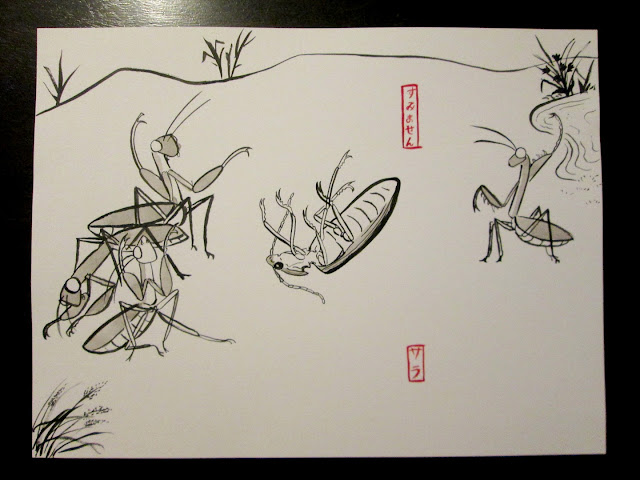Day 8
Recreate or interpret a work of art you admire.
This is based on a famous panel of the Choju Giga scroll (Animal Caricatures or Scrolls of Frolicking Animals) which was created sometime in the late 12th century in Japan. Similar to the original's ink on paper, mine was rendered in India ink and red acrylic ink on Bristol paper. I've replaced the rabbit with a click beetle trying to right itself, and the frogs were replaced with mantids (feeling ill today and my hand started cramping after I drew the beetle. The mantids aren't as well done as I would like. I may redo this sometime because I think it came out cute otherwise). The top "seal" in red says sumimasen, which is Japanese for excuse me! and the lower one is my name in Japanese. This was fun to make, but sketching with a brush is a lot harder than it looks, and no erasing! The Choju Giga artist was truly a master, I very much admire the brush work in the original.
Here is the original panel:
The work is often attributed to the monk Toba Sojo, but there is no way to verify its author.
This scene is described as a sumo match.


Comments
Post a Comment